What is Google's AI Mode, and how will it change search forever?
AI Mode promises to upend the entire search industry as we know it.
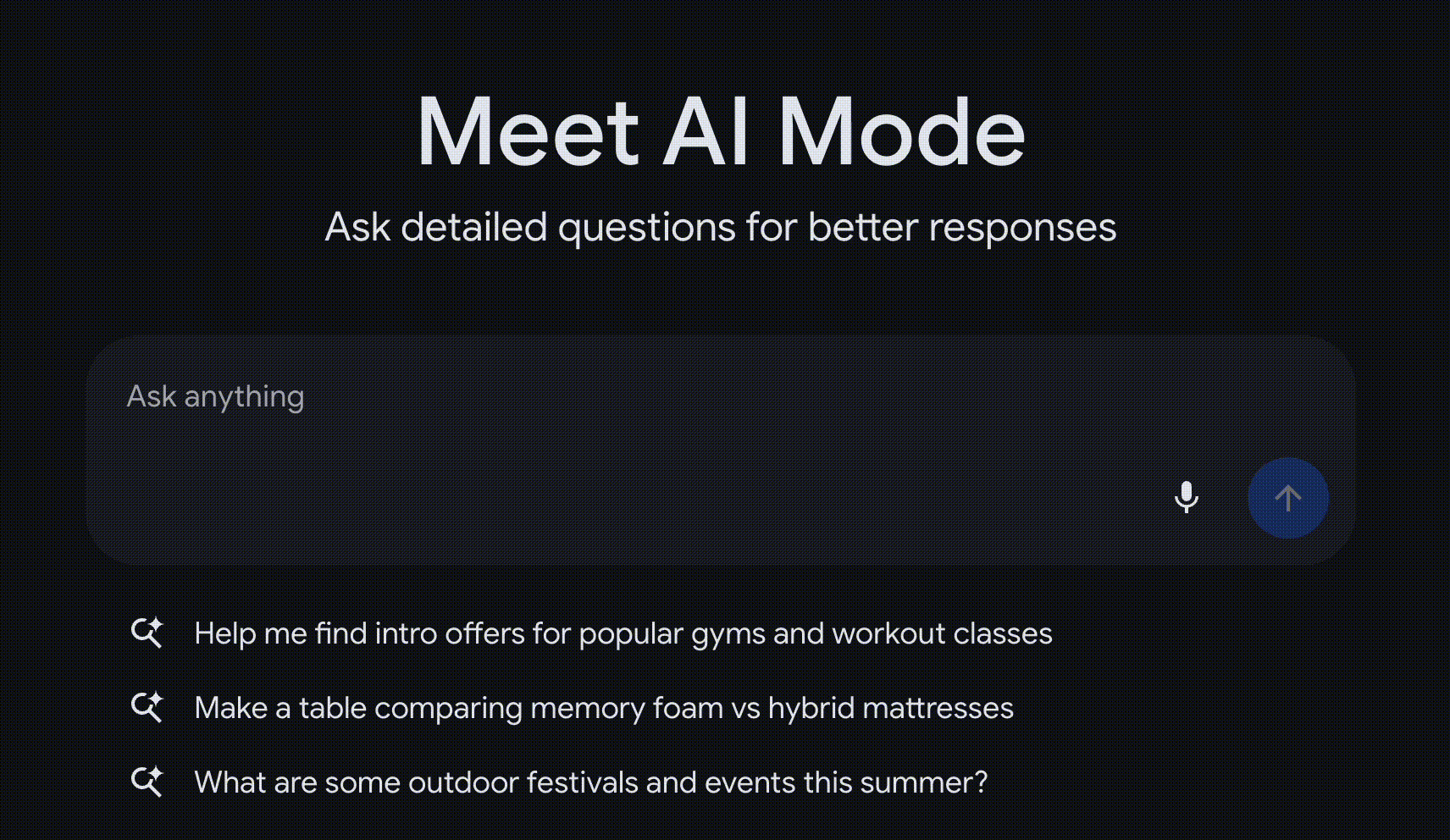
At this year's Google I/O conference, the company introduced a series of products that promise to radically shift the way people interface with the web, starting today.
As a part of its broader plan to make AI, and specifically its own AI, Gemini, the center of your world, the company shared more about what it’s calling “AI Mode” for Google Search.
AI Mode, first shown to journalists and other insiders in early March, aims to transform the way you interact with the broader web and fundamentally change how the search engine company views the act of searching itself.
What is AI Mode, and how does it change Google Search?
For starters, it helps to discern between two different Google features with almost confusingly similar names: Google AI Overview and Google AI Mode.
AI Overview was introduced to the public last year in May of 2024, with often hilariously off-base and sometimes even dangerous results. Powered by the now comparatively ancient PaLM 2 LLM, AI Overview is basically a “summarizer” AI that pulls the information you’re searching for from a few of the top pages and then combines them into several summarized paragraphs ahead of the rest of the results.
Meanwhile, the new AI Mode is powered by the Gemini 2.5 model and can be accessed through an optional tab that launched for all Google users on Tuesday.
AI Mode includes AI Overview (now backed by Gemini instead of PaLM 2) and a slew of other features, including Deep Search, Search Live, and agentic capabilities via the company’s Project Mariner effort.
Sign up to receive The Snapshot, a free special dispatch from Laptop Mag, in your inbox.
With all these features combined, Google wants to completely change how you interface with the broader web going forward. With the ability to buy tickets to a game or make reservations at a restaurant in your name with one request, AI Mode could forever usurp the passive, manual process of using the web.
Google can get me in at a restaurant now?
During its presentation, Google showed off several of AI Mode's agentic capabilities, including getting tickets to a game and reserving a table at a restaurant afterwards, all in one request.
The company didn't demo the full extent of this feature, but having toyed with it myself today, I can say it's surprising how good it is at running off and getting things done for you in a way you always expected AI should.
With a more conversational approach to the Google Search experience, AI Mode gathers information from across the web. It condenses everything you might need from a long-chain request into a single window.
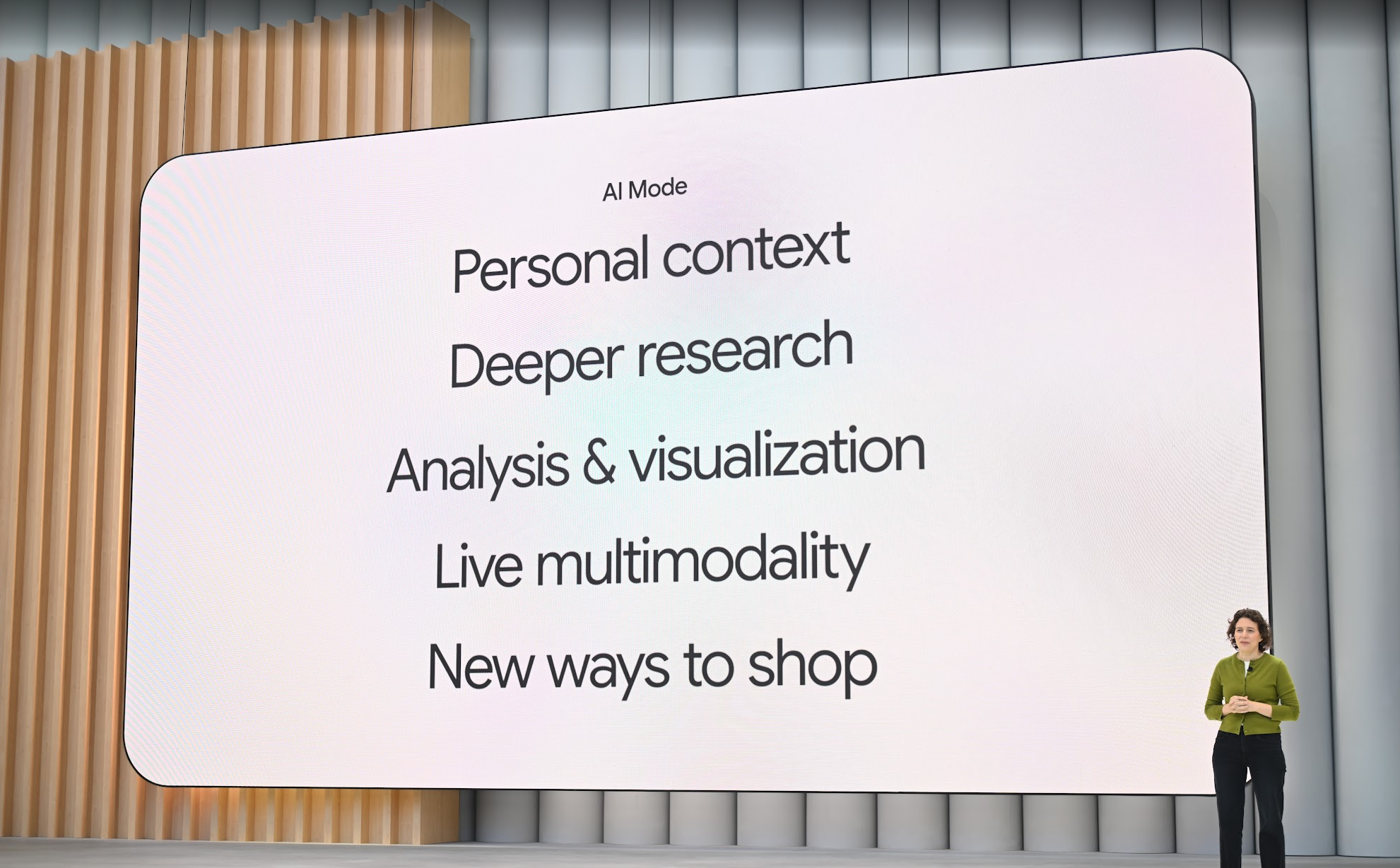
You can then take from the returned results and refine things even further, bouncing from one search to the next in natural language that remembers what you searched for last.
Also, if you use the broader Google suite of products, including Docs and Gmail, AI Mode can further personalize results based on your data history.
Once you’ve found the restaurant you want to order from or the game you want to attend, you tell Google to set it up, and AI Mode handles the rest.
The company wasn’t done there, though. It also showed new data visualization and analysis tools, where AI Mode can take in, contextualize, and even visualize larger amounts of data compared to a traditional Google Search.
Then, the presenter took a beat to unveil Deep Search, a part of AI Mode that can take in several instructions at once and contextualize long-chain requests in a single search.
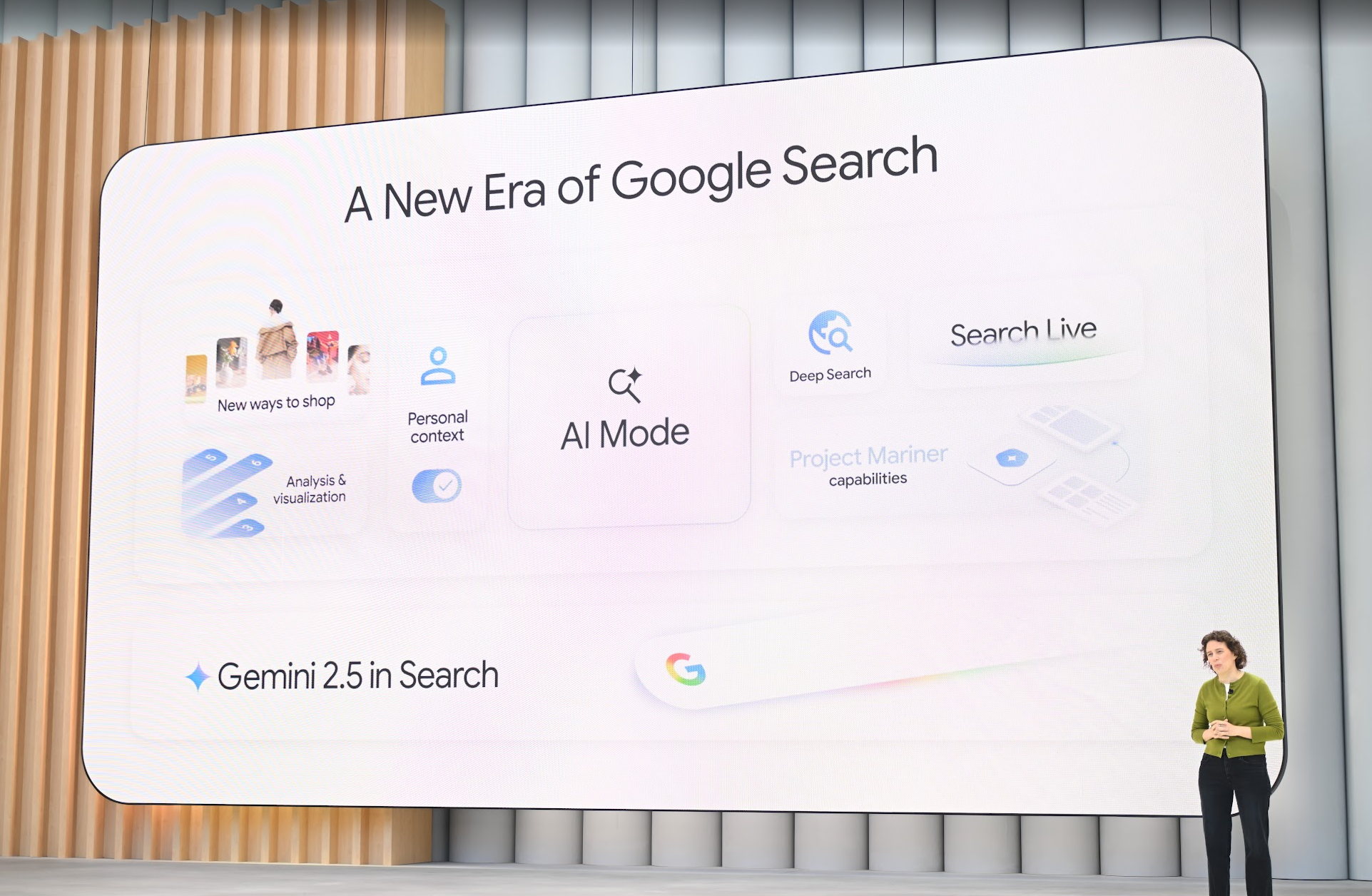
Lastly, like many types of Google Search these days, AI Mode is multimodal. This means users can ask questions via text or voice or even upload images and videos.
Combined, this all adds up to a new kind of Google Search that can understand complex queries, perform multi-faceted research, and synthesize responses in real time that consider all aspects of a user’s interactions.
How does Google’s AI Mode change the business of the web?
For those not in the online publishing industry, there are a few different ways that the people and businesses who write, edit, and shoot content make a profit. These include affiliate deals, selling ads, and sponsored content.
Two out of three of those revenue streams rely on people, or “clicks,” as you’ll hear them referred to in our meetings, coming to the site and interacting with the content. The more eyes on the content, the more ads you can sell and the more you can sustain the costs of running the site.
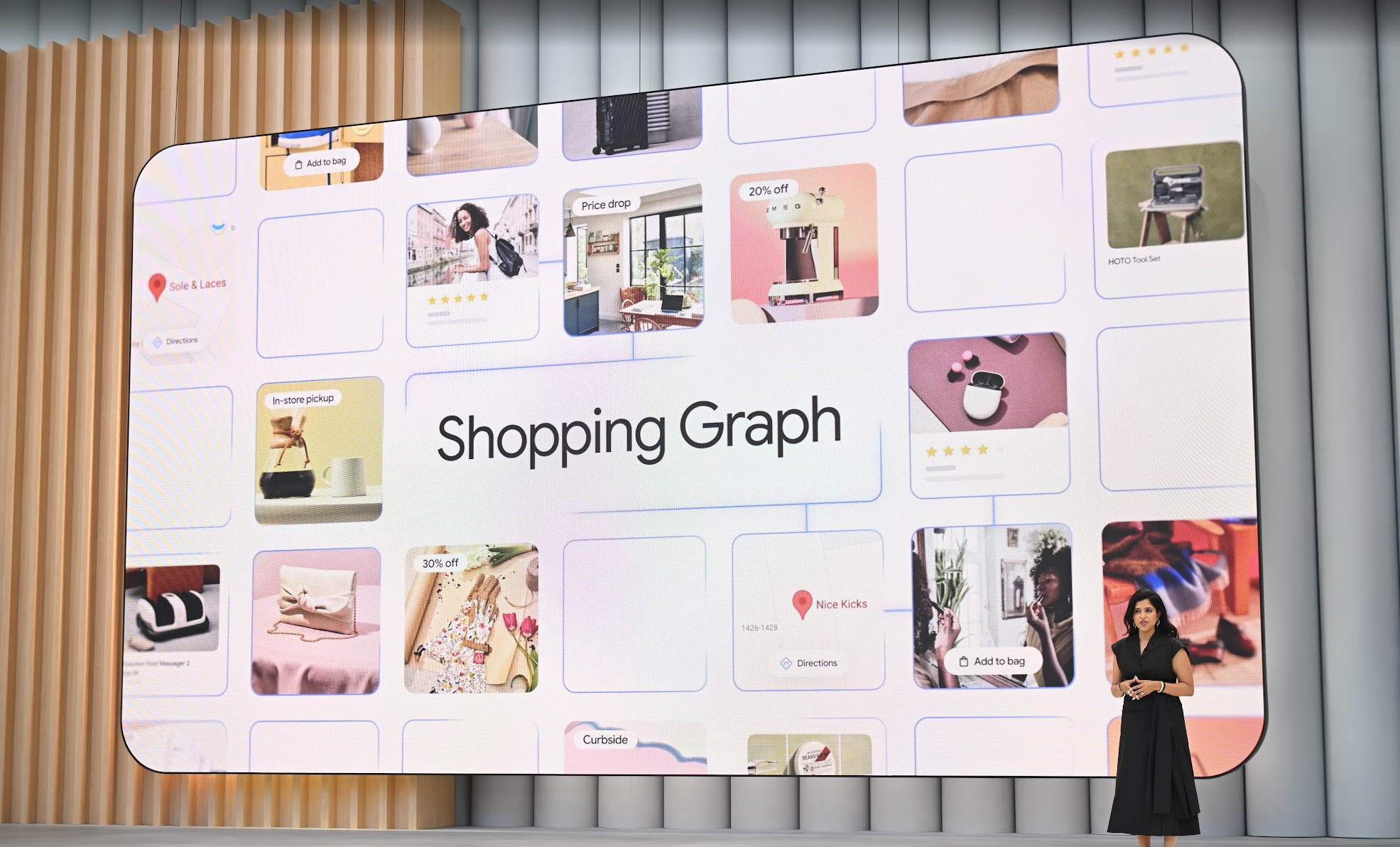
While many publishers have already reported diminished clicks in the wake of AI Overview, AI Mode turns the traditional search and SEO model on its head.
In essence, AI Mode operates as a chat window designed to Hoover up and repackage broad scopes of information from what otherwise may have been 20-100 different open tabs.
For example, when planning your kids' summer camps using traditional Google Search, every unopened tab is a lost click, meaning less money for the sites that Google uses to mine for information.
In one of Google’s examples during the keynote, a mock user is trying to find summer camp reservations for their kids. The user speaks in complete sentences and natural language as you would with any other LLM, and gives the agent follow-up questions after the first results return.
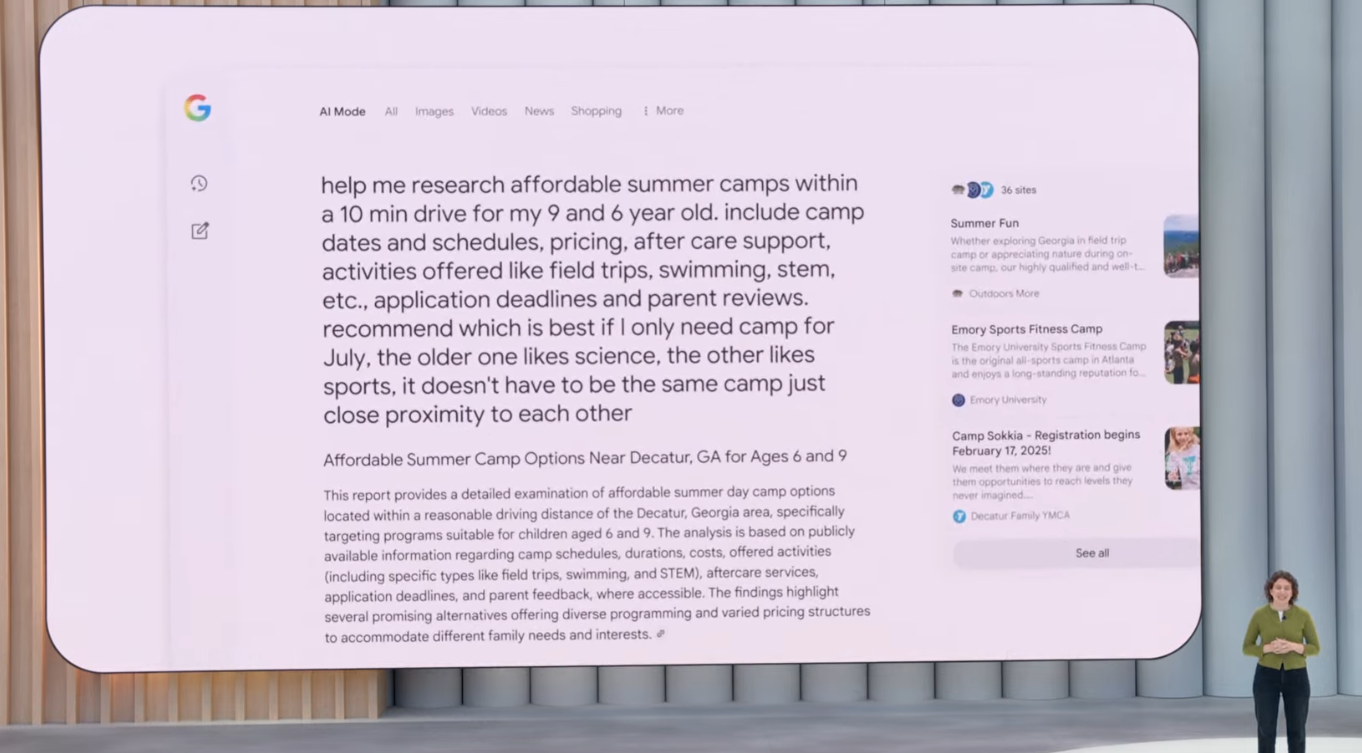
Google will encourage this back-and-forth going forward, as it keeps users in the company’s ecosystem for far longer than they used to for a simple search.
The longer you’re staring at a Google product, ultimately the more ads they’ll be able to serve, and the easier it will be to justify the massive datacenter costs required to keep all these AI Mode search plates spinning.
But if Google’s next big version of search ultimately kills revenue streams for the websites that Gemini depends on to train itself, what will be left for it to learn?
When does AI Mode release, and how can you try it for yourself?
As per Google’s product page and presentation, AI Mode is rolling out to all users for free today, May 20, 2025.
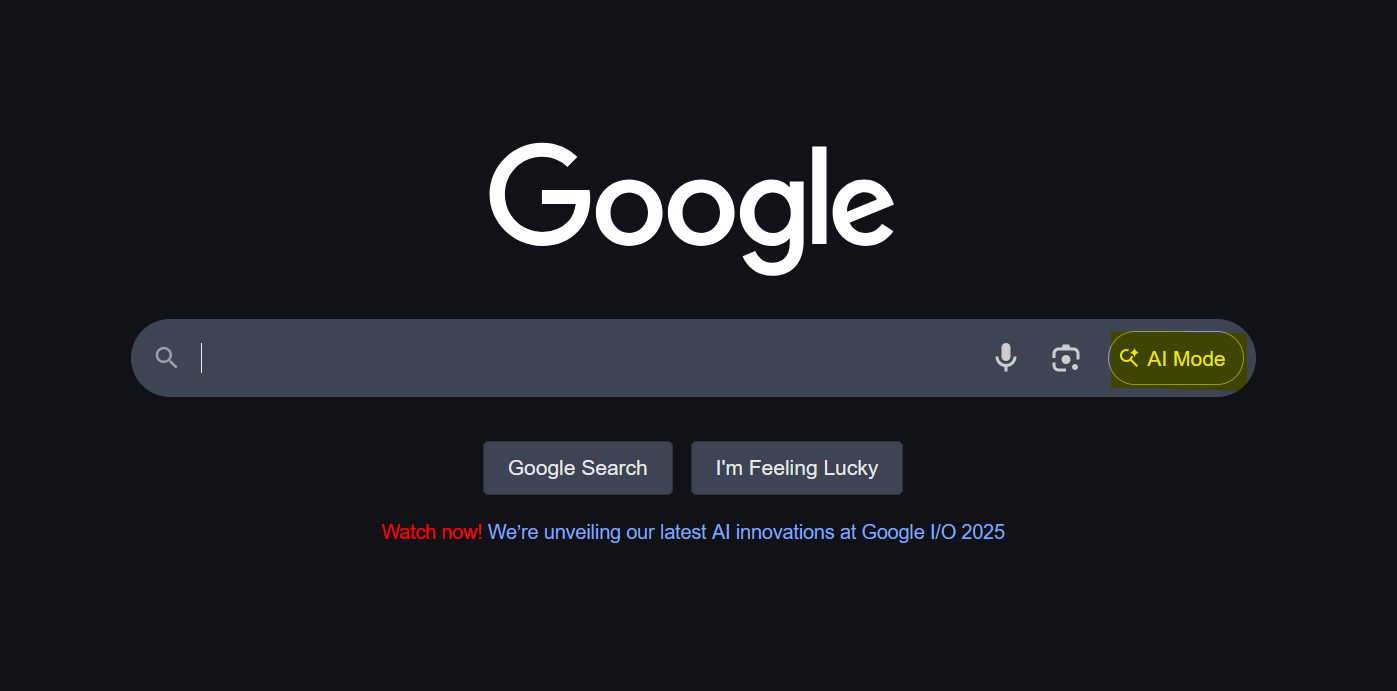
You can activate the feature yourself by opening up a fresh Google tab and clicking the "AI Mode" feature, highlighted above.
More from Laptop Mag

Chris Stobing grew up in the heart of Silicon Valley and has been involved with technology since the 1990s. Previously at PCMag, I was a hardware analyst benchmarking and reviewing consumer gadgets and PC hardware such as desktop processors, GPUs, monitors, and internal storage.
He's also worked as a freelancer for Gadget Review, VPN.com, and Digital Trends, wading through seas of hardware and software at every turn. In his free time, you’ll find Chris shredding the slopes on his snowboard in the Rocky Mountains where he lives, or using his culinary-degree skills to whip up a dish in the kitchen for friends.
You must confirm your public display name before commenting
Please logout and then login again, you will then be prompted to enter your display name.
